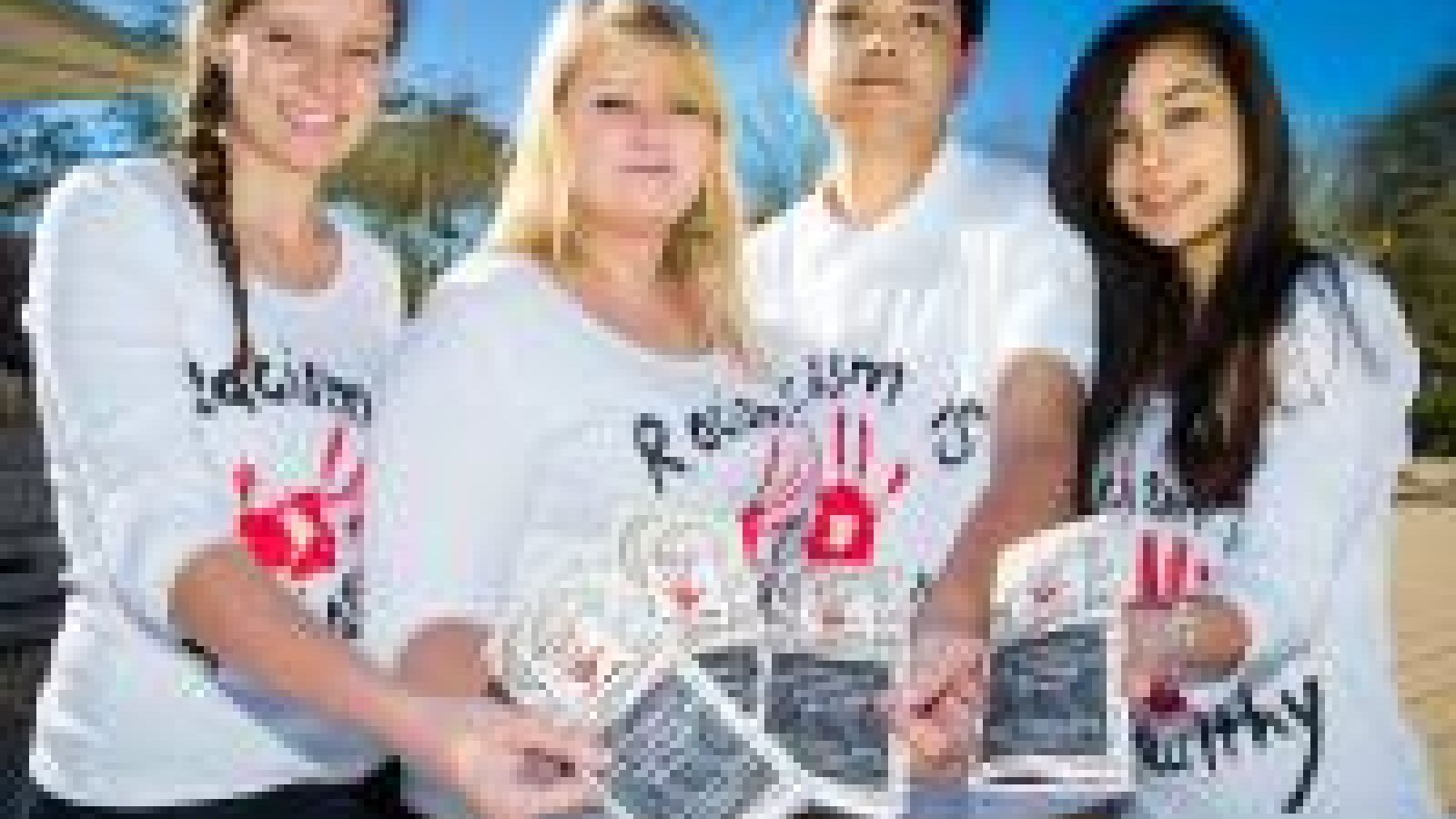Bringing health awareness to life on campus

Around 50 students from the School of Archaeology and Anthropology recently showcased their skills in communicating some of the world’s most significant health problems.
Led by Medical Anthropology lecturer Trang Ta, the students exhibited their works at Union Court on Thursday 29 May.
As part of the exhibition, students had to create a poster, a brochure and a multimedia video or podcast displaying the elements of their health campaign.
 (L to R:) Virginia DeCourcy, Lara Nicolaj, Gary Low and Melissa Van Brunnersum. Photo by Stuart Hay, ANU
(L to R:) Virginia DeCourcy, Lara Nicolaj, Gary Low and Melissa Van Brunnersum. Photo by Stuart Hay, ANU
“Instead of having just the students present to the course, I wanted to involve the greater ANU community,” Ta says.
“And so I thought it would be great to have it publicly displayed in terms of exhibition format, and also students can interact with fellow students and staff members and talk about the rationale behind their campaigns.
“This is a very creative project where they have to really use their critical thinking skills.”
Ta says all of the components had to work together as a health awareness campaign, using design, critical thinking and communication skills that can help the students gain employment when they graduate.
“I think this is also a good way to explain what Medical Anthropology is and the relevance of it to the greater community.”
Virginia De Courcy, undergraduate in Development Studies, helped to create a campaign on Indigenous health awareness.
She says one of the key issues her group focused on related to the inequality of health access for Indigenous people.
“In doing our research and interviewing people we found that structural inequalities were the main reason for the imbalance,” De Courcy says.
Another group focused their health campaign on Multi-Drug Resistant Tuberculosis, a strain of Tuberculosis that is resistant to drugs.
“What we’ve found is that only 27 per cent of the population have heard of this before, despite the fact that 59 per cent of the population have studied drug resistance,” undergraduate science student Gabrielle Gross says.
“So we felt it was really important to construct a campaign to get people to actually know that it exists, because how can you prevent a disease that you don’t know exists?”